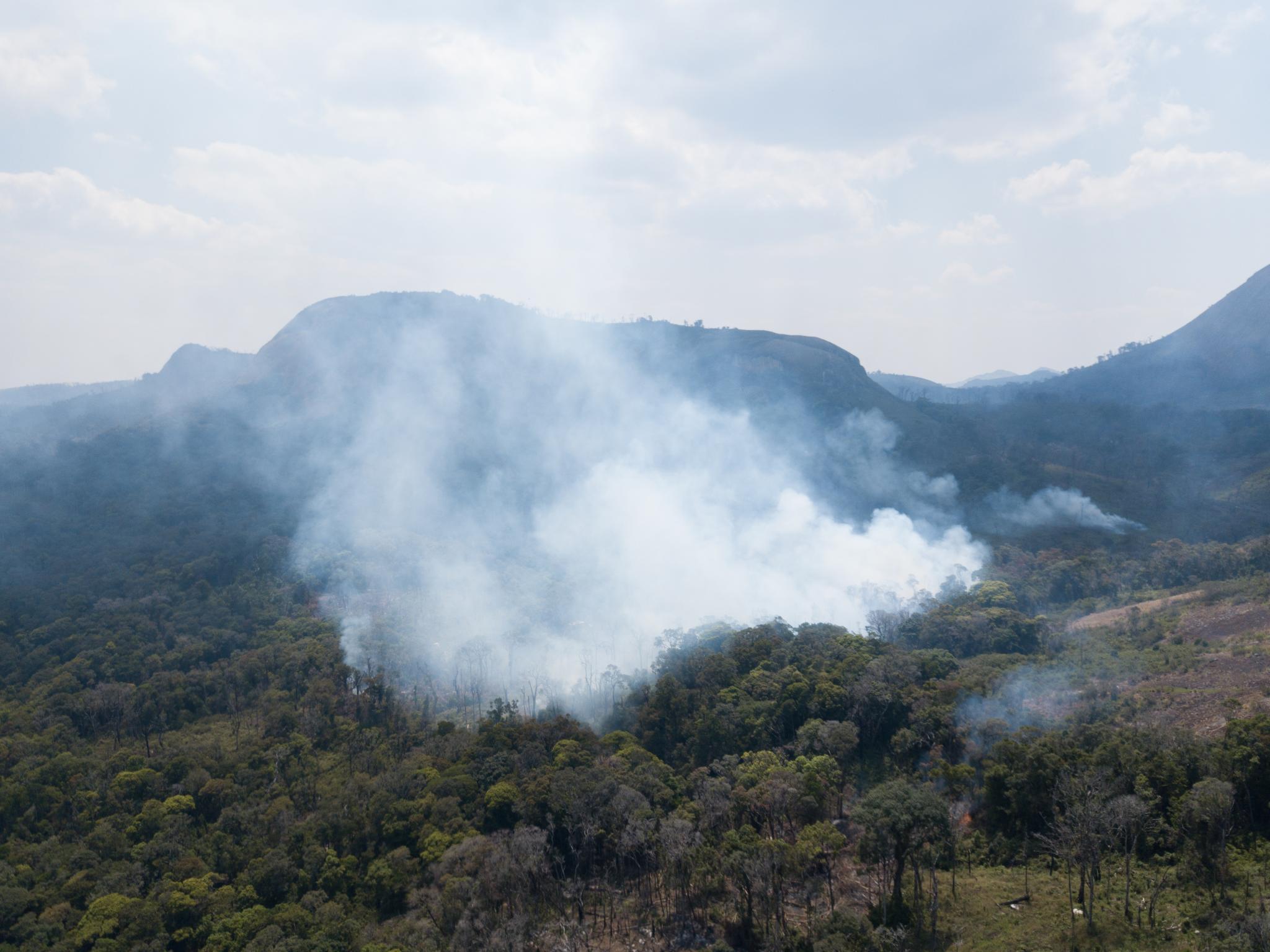Another threat to rainforest in 2020: Take action on forest fires
At this time last year, Earth’s tropical rainforest was burning with more severity than ever before. As the world watched on, the Congo Basin simmered and the Amazon burned.
Last year, Brazil’s Amazon rainforest saw a record number of fires. This burning caused a thick layer of smoke to descend on Sao Paulo more than 1,700 miles away. INPE, the Brazilian Space Agency, detected more than 72,000 forest fires between January and August in 2019, the highest number since records began in 2013. Areas of Brazil saw an 88% increase in deforestation in June 2019 compared to the same month in 2018. That’s areas of the Amazon rainforest roughly the size of a football pitch now being cleared every single minute.
Now, although the smoke may have cleared and media attention has passed, forest fires and deforestation will continue out of sight and mind if we fail to take global action now.
Take year-round action


This aerial photograph was taken of slash-and-burn agriculture in Mozambique.
It’s set to continue in 2020. In June, fires in the Amazon rainforest surpassed any other in the last decade and a new study warns that with the regional climate becoming hotter and drier, future fires could be even more damaging. The amount burned could double by 2050 and consume a staggering 16% of Earth’s rainforest.
Forest fires and Coronavirus
The prevention and control of these fires is essential. Fire-related air pollution already threatens public health and as the Covid-19 virus affects respiratory systems, this is more important than ever.
This year’s forest fires are another thing to add to the list of threats to the forest and its inhabitants. As the virus spreads in South America and reaches forest communities, the season of slash and burn also begins.
Life for indigenous and rainforest communities is precarious. Covid-19 is now making life so much harder and we want to help those who are facing exacerbated financial poverty due to this pandemic provide for their families and reduce pressure on their forest. Cool Earth, alongside our local partners, is helping local communities access everyday necessities, food, medical equipment and cash to survive these trying times. With the threat of fires worsening each year, we’re determined to do all that we can to help protect people and the planet by supporting the best ways to keep rainforest standing.
Forest fires are a global issue
When we think of rainforest and deforestation, it’s the Amazon that most often springs to mind. But rainforest right around the tropics needs our attention.
In particular, the world’s second-largest rainforest that covers an area four times the size of California is the only place to harbour all three subspecies of gorilla and supports some 150 different ethnic groups. It’s the rainforest of the Congo Basin, and is being deforested due to a demand for fuelwood, charcoal and clearing space for encroaching palm plantations. In one 48-hour period from 21 August 2019, there were 6,902 fires in Angola and 3,395 fires in the neighbouring Democratic Republic of Congo, compared with 2,127 fires in Brazil (BBC).
The underlying causes of forest destruction are largely driven by financial poverty. This makes it essential that our approach to forest conservation is global; sharing best methods for tackling slash and burn and deforestation between communities right around the Tropics.
Fires like this aren’t natural in tropical rainforests
Naturally, rainforest is characterised by water. Lots of it. Their permanently wet and humid state makes them normally resistant to fast-spreading fires.
But even the most water sodden rainforest is no match for the systematic and unrelenting clearing that is taking place in Brazil today. Coupled with severe drought, 50% less rainfall and high temperatures, rainforest fires will begin to rapidly spread if action isn’t taken.
“I want you to act as you would in a crisis.
I want you to act as if our house is on fire. Because it is.”
– Greta Thunberg, 2019
Homes for wildlife, water releasers and oxygen producers, nature has already designed a perfect climate-change-tackling machine, but they’re being burned in their thousands. Over the past several decades, as the world has increasingly warmed, so has its potential to burn (NASA).
Rainforest and Climate Action
Rainforest is undeniably our greatest safety net against catastrophic climate change.
Areas of primary tropical rainforest, like the Amazon, can be thousands of years old and are crucial and irreplaceable stores of carbon. Once these forests are cut down or burnt, they may never return to their original state (Mongabay). Even after 40 years of recovery, secondary regrowth forests remain species and carbon-poor compared to undisturbed primary forests.
We must take action to keep trees standing.
This problem isn’t going to go away. With your regular support, Cool Earth can work to take climate action, share local knowledge and develop the best ways to protect rainforest globally.
Further reading:
- Amazon fires: Angola and DR Congo ‘have more blazes’, BBC News
- Satellite Data Record Shows Climate Change’s Impact on Fires, NASA
- Deforestation: facts, figures, and pictures, Mongabay
